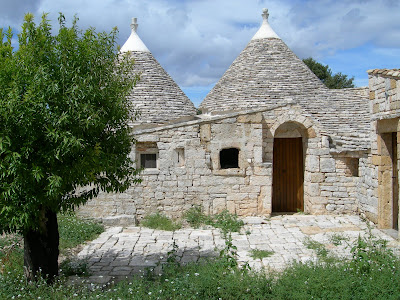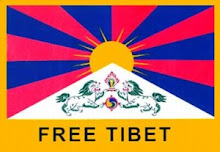 One of the greatest American Records from the 80s. Middle-class disillusions and vexated ambitions + Mexican radios + barbecued iguanas + Spaghetti Western-era Morricone + desert landscapes… Sour and dark, but simply irresistible. Heed the call of the West!
One of the greatest American Records from the 80s. Middle-class disillusions and vexated ambitions + Mexican radios + barbecued iguanas + Spaghetti Western-era Morricone + desert landscapes… Sour and dark, but simply irresistible. Heed the call of the West! «Call of the West is a concept album exploring the trials and tribulations of life of the common man in the south-western United States, particularly in the desert towns east of Los Angeles which stretch along the interstate highways into Nevada and Arizona. Most of the songs are downbeat mood pieces expounding upon the dashed hopes, withered aspirations, economic disenfranchisement, and existential malaise afflicting many of those who come to the southwest in search of wealth, fame and personal fulfilment.
«Call of the West is a concept album exploring the trials and tribulations of life of the common man in the south-western United States, particularly in the desert towns east of Los Angeles which stretch along the interstate highways into Nevada and Arizona. Most of the songs are downbeat mood pieces expounding upon the dashed hopes, withered aspirations, economic disenfranchisement, and existential malaise afflicting many of those who come to the southwest in search of wealth, fame and personal fulfilment.
The bleak, haunting atmosphere of the album evokes the romantic western frontier myth transfigured by the urban fatalism of L.A. crime fiction and Hollywood film noir as well as the mournful, elegiac spirit of classic and revisionist movie westerns. In many songs, the themes of self-deceiving ambition and bitter disillusionment set against the sunbaked frenzy and desolation of southern California owe a great deal to the allegorical grotesquerie of Nathanael West.» (Full review here)
 «Cosa c'è oltre il muro del voodoo: le masserizie di un medicine show… la bottega di un rigattiere… il simulacro del bisonte… il mito della frontiera ormai in svendita… e polvere… tanta polvere. Ma, accanto a ciò, c'è anche l'elettricità… l'impronta fantascientifica della modernità… l'(im)possibile domani. Passato, presente e futuro. Realtà e fantasia. Nessuno ha saputo dare all'interpretazione della tradizione una adeguatezza al presente pari a quella data dai Wall Of Voodoo. Una ricetta incredibile fatta di radici “country & western”, con una spruzzata di Kraftwerk, tanto Morricone e una subdola inclinazione dark. I tre elementi che, come altrettante pennellate di colore, disegnano la loro musica sono l'intreccio ritmico creato da Joe Nanini, le calde tonalità chitarristiche di Marc Moreland e l'incredibile voce di Stan Ridgway. Una miscela che, una volta scombinata, non sarà mai più in grado di toccare queste vette. Se i brani più conosciuti sono gli hit Mexican Radio e Tomorrow, invero eccelsi, è però altrove che il gruppo riesce a esprimersi con tutto il suo potere inquietante, soprattutto in quelle ballate sornione, Lost Weekend, Factory, Look At Their Way e Hands Of Love, che concentrano in pochi minuti la tensione del grande thriller con crescendo impercettibili che, quando sei ormai preparato alla deflagrazione, si placano inaspettatamente. Poi ci sono i momenti più epici e propriamente morriconiani di Call Of The West e del breve interludio On Interstate 15, e infine la travolgente Spy World. Ecco: un mondo di spie, è questo il trait d'union fra polvere e fantascienza, fra blitz nel futuro e devozione a un epoca che non c'è più.» (Kathodik)
«Cosa c'è oltre il muro del voodoo: le masserizie di un medicine show… la bottega di un rigattiere… il simulacro del bisonte… il mito della frontiera ormai in svendita… e polvere… tanta polvere. Ma, accanto a ciò, c'è anche l'elettricità… l'impronta fantascientifica della modernità… l'(im)possibile domani. Passato, presente e futuro. Realtà e fantasia. Nessuno ha saputo dare all'interpretazione della tradizione una adeguatezza al presente pari a quella data dai Wall Of Voodoo. Una ricetta incredibile fatta di radici “country & western”, con una spruzzata di Kraftwerk, tanto Morricone e una subdola inclinazione dark. I tre elementi che, come altrettante pennellate di colore, disegnano la loro musica sono l'intreccio ritmico creato da Joe Nanini, le calde tonalità chitarristiche di Marc Moreland e l'incredibile voce di Stan Ridgway. Una miscela che, una volta scombinata, non sarà mai più in grado di toccare queste vette. Se i brani più conosciuti sono gli hit Mexican Radio e Tomorrow, invero eccelsi, è però altrove che il gruppo riesce a esprimersi con tutto il suo potere inquietante, soprattutto in quelle ballate sornione, Lost Weekend, Factory, Look At Their Way e Hands Of Love, che concentrano in pochi minuti la tensione del grande thriller con crescendo impercettibili che, quando sei ormai preparato alla deflagrazione, si placano inaspettatamente. Poi ci sono i momenti più epici e propriamente morriconiani di Call Of The West e del breve interludio On Interstate 15, e infine la travolgente Spy World. Ecco: un mondo di spie, è questo il trait d'union fra polvere e fantascienza, fra blitz nel futuro e devozione a un epoca che non c'è più.» (Kathodik)
Link in comments





















































